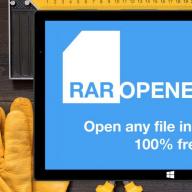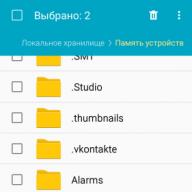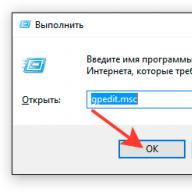When submitting reports in the Electronic Budget system, errors often occur. The experts of the journal Accounting in the institution have prepared a large memo with errors in the Electronic budget and their step-by-step solution.
The cheat sheet is divided into several sections:
- Creation and editing of reporting forms;
- Import;
- Signing;
- Input and editing.
Creation and editing of reporting forms
Most often, problems in the GIIS Electronic Budget arise with the creation and editing of reporting forms. In, you will learn what to do when the following errors occur:
- When entering your personal account, the list form of documents is not displayed;
- When entering your personal account, the button icons are not displayed;
- After the 1st day of the month, reports in the list form disappeared;
- The system displays an error: when creating or importing reports according to Instruction No. 33n, the chapter code was not filled;
- Can't save the report after making changes;
- Unable to download the text part of the explanatory note;
- Cannot refill reporting forms based on other reports;
- You must enter a filter to find the desired value;
- A form with zero indicators was drawn up, the status was assigned to the document
"Indicators not available." The report does not change its status to "Submitted"; - The system gives an error: “Personal account was not found in the report f. 0503779 ";
- The form is in the "Control not passed" status. The report cannot be edited. What to do with him?
- How do I return a report with the "Canceled" status?
- The report control found an error that is valid;
- In the form 0503769, the required account is not selected from the directory "Working chart of accounts";
- At the entrance to the personal account in the workplace there is no branch "Accounting and reporting";
- When entering the menu "Formation and presentation of reporting" in the list
there is no authority (AU or BU); - There is no button "Agree" for documents with statuses "Created with errors", "Created without errors".
Import
By import, in the memo you will find what to do in case of the following errors:
- The system generates errors when importing a report: "Document transformer not found",
"Inconsistency of the number of fields in blocks TB = 01, TB = 02"; - The file is not loaded, and the system displays the message "Chapter code does not match";
- Can't load multiple reports on form 0503779 with different CFOs -
check for uniqueness interferes. When loading a new report with another
KFO old is canceled.
Signing
The memo also describes what to do with signing documents in different situations:
- The system generates an error when signing the reporting form "This user
cannot approve the document ”;
in his absence? No reports have been generated yet;- The user who signs the reports goes on vacation. How to sign reports
in his absence? Reports have already been signed by one or more users.
Input and editing
- The system generates an error when creating an entry in the "Settings
coordination of reporting forms ". When choosing a matching name and I. About
the user is absent or repeated several times; - The directory "Contractors" does not contain the required organization.
If in these lists you find an error that you encountered while working with the GIIS Electronic Budget, see and download a memo with the solution of these problems in
What is "Electronic budget" and how is it related to national projects
The "Electronic Budget" system is a unified system for managing state and municipal finances, the operator of which is the Ministry of Finance. In this system, all participants in the budget process (more than 10 thousand organizations) are working on the formation of the country's budget, the implementation of state assignments, estimates, etc. Through the "Electronic Budget" all agreements for the provision of subsidies are concluded.
A separate subsystem for managing national projects implemented in accordance with the May presidential decree until 2024 has been created in the "Electronic Budget". The cost of implementing all national projects is estimated at 25.7 trillion rubles. from 2019 to 2024 (.pdf). Of these, 13.2 trillion will be covered by the federal budget, for 4.9 trillion rubles. regional authorities will be responsible. At the same time, mainly regional powers will be provided with funding from the federal budget (about 95%).
Officials complain about freezes and crashes
For each national project, federal and regional officials must enter into the system from several hundred to several thousand indicators, a federal official explains to RBC. “Editing one checkpoint can take up to half an hour - the system is slow to respond, freezes, throws an error,” he said.
“On average, it takes seven to ten clicks to edit one breakpoint. Thus, the average editing time for one control point can range from several minutes to half an hour. If it is necessary to adjust the federal project, the technical process may require on average about 54 man-hours, ”the official described the process of working in the system.
Adjusting 350-400 milestones for one federal project may require three specialists to work over several days, a federal official cited an example. According to him, "the system is especially slow in the middle of the working day: the reaction to one click can take up to fifteen minutes."
Regional officials also record technical failures. “There are indeed technical failures in the system. We encounter them in our work and are in constant communication with the Federal Treasury on issues of their elimination, ”Acting RBC told RBC. Minister of Finance of the Chelyabinsk Region Andrey Pshenitsyn. “From this year on, information on financing national projects began to pass through it [the system]. Therefore, of course, it requires constant tuning, ”he added. According to Pshenitsyn, problems arise with access to the system, registration of users, input of information, and the correctness of its processing.
“Often, a long wait for the system's response ends in an error, after which in most cases it is necessary to re-enter and start a new session,” agrees a federal official.
The press service of the Ministry of Labor confirmed to RBC the information about the failures, noting that they did not affect the work of the department, the technical support service promptly processed messages about failures.
The press service of the Ministry of Telecom and Mass Communications of RBC reported that employees of the ministry regularly face various problems in working with the "Electronic budget". “Periodically, new types of errors appear. All this leads to forced downtime, to the loss of time by employees, which they could have spent much more efficiently. But it should be noted that the technical support of the system began to help more willingly and faster than before, ”the Ministry of Telecom and Mass Communications reported.
The Ministry of Finance of Tatarstan, Bashkortostan and the Republic of Crimea reported that they did not encounter system failures. In preparing the material, RBC sent inquiries to the press services of the ministries of finance of the Moscow, Sverdlovsk, Leningrad, Novosibirsk regions, as well as to the ministries of finance of the Khabarovsk Territory, the Republic of Mari El. RBC also sent inquiries to all ministries involved in the implementation of national projects.
Ministry of Finance cites lack of user experience
The Ministry of Finance records all errors that occur during the operation of the "Electronic Budget" subsystem, the department told RBC. “Considering that the system is less than six months old, and more than 12 thousand users work online in it, errors happen, this is inevitable,” the Finance Ministry noted, adding that on average, problems are eliminated within no more than 18 hours.
The information system always requires a lot of work at the initial stage of data generation, the ministry stressed. But the overwhelming majority of calls are requests for consultation from users who first encountered the operation of a system of this class (electronic document management, a single cloud, many built-in controls, reference books), which in itself is perceived as a difficulty in work, the Ministry of Finance believes. "Errors in the system make up a small proportion," the department says.
“Over the more than six-year history of the functioning of the“ Electronic Budget ”system, there has not been a single case of failure to meet the deadline or slowdown in the formation or execution of the budget,” the Finance Ministry recalled. To improve the work of the system, the Ministry of Finance regularly conducts work on optimizing the program code, load testing, and balancing the load on the servers.
The structure of "Rostec" was responsible for the development of the system.
The contract for the development of the system software was concluded with the State Scientific Innovation and Implementation Center (GNIVTs) JSC, the Ministry of Finance told RBC. The company was also involved in the development of the IT system for the Federal Tax Service. The contract price was 299.7 million rubles, the deadline for the work under the contract is December 10, 2019. "Payment is made in stages in accordance with the terms of the contract as soon as it is handed over," the department added.
The subcontractor of GNIVTs is BARS Group, a subsidiary of Rostec State Corporation. It is she who is developing the "Electronic Budget" subsystem to control the implementation of national projects, follows from the company's press release.
A representative of BARS Group declined to comment. An RBC source close to the company claims that the system is working smoothly. “The introduction of any new system is accompanied by questions and the need to advise the users of this system. The company receives applications for technical support, but they are resolved in the working order, "- says the interlocutor of RBC.
Common mistakes when connecting to GIIS
« Electronic budget»
If you have problems connecting to the GIIS "Electronic budget", you need to check the settings:
1.the entrance to your personal account is carried out by the link http: //lk. budget. gov. ru/ udu- webcenter;
2. check the "Continent TLSVPNClient" settings.
Open the settings configurator (Start> All Programs> Security Code> Client> Configure TLS Client Continent), "Port" value must be specified 8080 , "Address" -lk. The checkbox "Use external proxy server" should not be checked if the organization does not use an external proxy, "Require RFC 5746 support" can be removed.
After adding the TLS Continent certificate, the "Certificate" field should indicate "<»;
Figure 1. Service configuration
3. check your browser settings.
Using the MozillaFireFox browser as an example, start the browser, open the connection settings (Main menu of the browser "Tools"> "Settings"> tab "Advanced"> tab "Network"> button "Configure"). Select "Manual configuration of the proxy service" in the field "HTTP proxy ”, specify the value 127.0.0.1,“ Port ”- 8080. Check the box“ Use this proxy server for all protocols ”.
The "Do not use proxy for" field should not contain the value 127.0.0.1.

Figure 2. Connection parameters
Typical mistakes when connecting to GIIS
« Electronic budget»
Solution options: 1) Disable antivirus. If the problem is solved, change the antivirus settings 2) Check the TLS and browser settings.
2. 403 Access denied. The server certificate differs from the one specified in the settings. The length of the certificates differs.
Solution: Check the certificate specified in the TLS settings by name in the line. Should be “<».
3. Doesn't show the window for choosing a certificate.
Solution: Uncheck the "Require RFC 5746 support" checkbox if it is. If not, check the rest of the settings.
4. 403 Access denied. Root certificate not found.
Solution: Reinstall the Federal Treasury CA certificate (if it was already installed).
For WindowsXP:
Start> Run> mmc> console> add or remove snap-in> add "certificates" (Fig. 3)> my account> Done> OK> expand the list> open the line "Trusted Root Authorities" - "certificates"> in an empty space of the window with certificates, right-click and select (Fig. 4)> all tasks> import>

Figure 3

Figure 4
For Windows 7:
Start> Run> mmc> file> add or remove snap-in> add "certificates" snap-in (Fig. 5)> add> my account> Finish> OK> expand the content and go to the line "trusted root authorities" - "certificates" ( Fig. 6)> on an empty space in the certificate window, right-click and select> all tasks> import> select the required certificate and install.

Figure 5

Setting up an electronic budget workstation takes place in several stages, they are not complicated, but require care. We do everything according to the instructions for setting up an electronic budget. Briefly and to the point ...
Electronic budget workplace setup
Root certificate e-budget
Create a key folder in My Documents to store downloaded certificates in this folder:
On the site http://roskazna.ru/gis/udostoveryayushhij-centr/kornevye-sertifikaty/ in the GIS menu -> Certification center -> Root certificates, you need to download " Root certificate (qualified) "(see figure), or if you received a USB flash drive with certificates, copy them from the Certificates folder.
Continent TLS VPN Certificate
The second certificate that needs to be downloaded is the Continent TLS VPN certificate, but I could not find it on the new roskazna site, so I put a link from my site. Download the Continent TLS VPN certificate to the key folder, it will be useful to us later when we configure the Continent TLS client program.
Install the downloaded Root Certificate (qualified) to work with an electronic budget.
In the START menu -> All programs -> CRYPTO-PRO -> run the Certificates program.
Go to Certificates as shown in the picture below:

Go to the Action menu - All tasks - Import, the Certificate Import Wizard window will appear - Next - Browse - Find the downloaded Root certificate (qualified) in our case, it is located in My Documents in the key folder

If everything was done correctly, then the root certificate of the Federal Treasury CA will appear in the certificates folder.

Installation "Continent TLS Client" for working with electronic budget
Continent_tls_client_1.0.920.0 can be found on the internet.
Unpack the downloaded archive, go to the CD folder and run ContinentTLSSetup.exe

From the item, click on the Continent TLS Client KC2 and start the installation.


We accept the terms

In the destination folder, we leave it by default

In the Configurator Launch window, put a tick on Launch Configurator after installation is complete
During installation, the Service settings window will appear:

Address - specify lk.budget.gov.ru
Certificate - select the second certificate downloaded earlier in the key folder.

Click OK and complete the installation, Done.

When asked to restart the operating system, we answer No.
Installation of the electronic signature tool "Jinn-Client"
You can download the Jinn-Client program on the Internet.
Go to the Jinn-client - CD folder, run setup.exe

Click from the Jinn-Client list, the installation of the program starts

Ignore the error, click Continue, Next, accept the agreement and click Next.

Enter the issued license key

Install the program by default, click Next


We are completing the installation, we answer the question about restarting the operating system No
Installation of the module for working with electronic signature "Cubesign"
If you need an archive with the program, write in the comments.
Run the cubesign.msi installation file


Configuring the Mozilla Firefox browser to work with the Electronic budget.
1. Open the "Tools" menu and select "Options".
2. Go to the "Additional" section on the "Network" tab
3. In the "Connection" section of the settings, click the "Configure ..." button.
4. In the opened connection parameters window, set the value
"Manual configuration of the proxy service".
5. Set the values of the HTTP-proxy fields: 127.0.0.1; Port: 8080.

6. Press the "OK" button.
7. In the "Settings" window, click the "OK" button.
Login to the personal account of the Electronic Budget
A window will open with a choice of a certificate for entering the personal account of the Electronic Budget.

We select a certificate to enter the Personal Account of the Electronic Budget, if there is a password for the closed part of the certificate, write and click OK, after which the Personal Account of the Electronic Budget will open.

lk.budget.gov.ru/udu-webcenter- if you got to this page, then you tried to enter your personal account of the Electronic Budget, but could not do it.
Why? Let's try to answer the question.
1. First of all, we check if you also have the Jinn and Continent TLS programs installed (at the time of this writing, version 1.0.920.0 was installed). I advise you to immediately switch to

2. - The main reason why you could not enter the Electronic Budget when all the programs necessary for the operation are installed is not a configured browser (Mozilla Firefox, Internet Explorer, Google Chrome, Opera). Let's take a look at the example of popular browsers for working in DL.
Browser settings for working in the Electronic Budget after switching to the TLS 2.0 Continent are not required !!!
I advise you to set everything up to Internet Explorer!!!
a) Internet Explorer
1. Open the properties of the web browser.
2. Go to the "Connections" tab.
3. Press the "Network Settings" button.
4. In the "Proxy server" section, set the fields Address: 127.0.0.1, Port: 8080.
5. Press the "OK" button.
6. Go to the "Security" tab.
7. Select the zone for the "Trusted sites" setting.
8. Press the button "Sites".
9. In the "Trusted sites" window, uncheck the box "All sites in this zone require server verification (https :)".
10. In the "Add the next node to the zone" field, set the value "http://lk.budget.gov.ru" and click the "Add" button.
11. In the "Trusted sites" window, click the "Close" button.
12. In the "Browser Properties" window, click the "OK" button.
b) Google Chrome
1. Open your web browser settings.
2. Go to the bottom of the settings window and activate the link "Show additional settings".
3. Click the "Change proxy server settings" button.
4. Repeat paragraphs 4-12 of section "a) Internet Explorer".
c) Mozilla Firefox
1. Open the "Tools" menu and select "Options".
2. Go to the "Additional" section on the "Network" tab.
3. In the "Connection" section of the settings, click the "Configure ..." button.
4. In the connection settings window that opens, set the value "Manual configuration of the proxy service".
5. Set the values of the HTTP-proxy fields: 127.0.0.1; Port: 8080.
6. Press the "OK" button.
7. In the "Settings" window, click the "OK" button.
d) Opera
1. Open the "Settings \ General Settings" menu.
2. Go to the "Advanced" tab, select the "Network" section of the settings.
3. Click the "Proxy servers ..." button.
4. In the connection settings window that opens, set the "Configure proxy server manually" value.
5. For the HTTP protocol, set the values of the proxy-server fields: 127.0.0.1; Port: 8080.
6. Set the value "Use proxy server for all protocols".




